This is my Spring 2020 blog that will contain my educational social media posts on Squirrel Monkeys! - Sabrina
Don't wanna be here? Send us removal request.
Text
Conservation of Squirrel Monkeys
So before I go into conservation efforts for squirrel monkeys, let’s recap the species! There are five species of squirrel monkey (we won’t go into subspecies) and their conservation status ranges from Least Concern to Vulnerable. The species designated “Least Concern” are the Black-capped Squirrel Monkey and the Central American Squirrel Monkey. Bare-eared squirrel monkeys are “Near Threatened,” and both the Common Squirrel Monkey and the Black Squirrel Monkey are “Vulnerable.” For those of you who may not know, the next classification past “Vulnerable” is “Endangered.” There are also two species that are already extinct: Saimiri annectens and Saimiri fieldsi.
Each species of squirrel monkey is threatened with habitat loss from deforestation/logging, population fragmentation, poaching and the illegal pet trade, and hunting. The Central American squirrel monkey, just to put everything into perspective, has fallen from over 200,000 individuals in the wild in the 1970′s to less than 5,000 (in some studies, under 3,000.) In 2003, it was listed as “Endangered” but reevaluation in 2008 promoted them to Vulnerable, and they lost some legal protections.
Due to their status being designated as less of a emergency than other primates, not many conservation efforts have been made specifically for squirrel monkeys, although they are protected under international legislation to prevent poaching and exportation as pets or breeder monkeys.
Reforestation is being focused on both in Panama and Costa Rica, which is helpful to the squirrel monkeys that live there. Projects by “Saimiri Wildlife” are targeting areas that would be the most beneficial, although rainforests are home to vast biodiversity and their reforestation progress helps many more species than the squirrel monkey.
#Boubli J.-P. Rylands A.B. de la Torre S. & Stevenson P. 2008. Saimiri sciureus. The IUCN Red List of Threatened Species 2008: e.T41537A10494#Wallace R. Cornejo F.M. & Rylands A.B. 2018. Saimiri boliviensis. The IUCN Red List of Threatened Species 2018: e.T41536A17940021. https://d#Lynch Alfaro J. Alves S.L. Silva Jr J. Ravetta A. & Messias M. 2019. Saimiri ustus. The IUCN Red List of Threatened Species 2019: e.T41538A1#Boubli J.-P. & Rylands A.B. 2008. Saimiri vanzolinii. The IUCN Red List of Threatened Species 2008: e.T19839A9023022. https://dx.doi.org/10.#Cuarón A.D. Morales A. Shedden A. Rodriguez-Luna E. & de Grammont P.C. 2008. Saimiri oerstedii ssp. citrinellus. The IUCN Red List of Threat#name Mein. “The Rainforest Returns.” Project Planning: Standard web.archive.org/web/20110606044707/www.saimiri.org/en/project/project-planni#Saimiri#squirrel monkey#primate#wildlife conservation#zoology
5 notes
·
View notes
Text
Squirrel Monkey Culture!
Just in case squirrel monkeys aren’t awesome enough for you, let’s talk about some of the cultural behaviors observed in the species.

In a study observing squirrel monkeys across various countries, it was found that there was a significant difference in social distance, troop numbers, cohesiveness, and play behavior between groups.
To explain the range to you, there’s an example I thought was very interesting. In one group, juveniles played for multiple hours a day and in another, it was never observed. In the troop that was not seen playing, the adults show fewer agonistic behaviors, are seen in closer proximity to one another and even though were close together, had fewer overall interactions than other groups.
The researchers attributed this to the start of the “chill” colony being in captivity and the monkeys not learning behavior from other monkeys. Even though many generations later in an environment designed to simulate their wild environment, these behaviors did not begin to show up in the troop. This illustrates that the behaviors seen in the other groups were never taught to these monkeys. Behavior that is “taught” to another individual of a species and varies from group to group defines cultural behavior.
Cultural behavior is seen in many animal species, with just a few other examples being animals having different “dialects” in their vocalizations that can be used to accurately identify where they grew up. Avid birders have noticed different calls and variances in calls when they hear individuals of the same species in different states.
#Azrin Baldwin Baldwin Baldwin Bandura Breland … Suomi. (1973 December 1). The role of play in social organization: Comparative observations#Ortega-Welch M. (2017 December 14). Learn Your Local Birds' Regional Accents. Retrieved from https://www.audubon.org/news/learn-your-local-b#Squirrel monkey#animal culture#birding#monkeys#saimiri#monkey research#animal research#monkey culture
6 notes
·
View notes
Text
Wanna learn about an old hominid that you probably never heard of? Read on!
Homo rhodesiensis

Dated to live between .8 and .12 million years ago, Homo rhodesiensis is associated with living during the time hominids began to use fire.
They were present throughout Africa and Eurasia, the most famous fossils from a cave in Zambia. Around where it was found was thought to be miombo woodlands and grass-covered wetlands. They ate mainly tubers, rootstock, and grains according to scientists who’ve studied their teeth.
#Sarmiento Esteban E. et al. The Last Human: a Guide to Twenty Species of Extinct Humans. Yale University Press 2007.#Image: “THE OUTLINE OF SCIENCE.” The Project Gutenberg EBook of The Outline of Science Volume 1 of 4 by J. Arthur Thomson. www.gutenberg.org
9 notes
·
View notes
Text
Squirrel monkeys and Infectious Disease
Back for a Primate Post, though it’s been a while! Today’s topic is on my group’s role in zoonotic diseases and research.
Squirrel monkeys have been used in research A LOT for studying diseases such as Creutzfeldt–Jakob and other spongiform encephalopathies. Other diseases endemic to squirrel monkeys and studied to help humans include multiple strains of their herpesvirus, including one that could be used as a model for Epstein-Barr in humans.
Squirrel monkey retrovirus was studied to understand retroviruses in humans better- including HIV/AIDS, T-cell leukemias, lymphomas, and spastic paraparesis. One called “Simian Foamy Virus” is thought to be one of the oldest viruses and has been transmitted from chimpanzees to humans, although studied in squirrel monkeys due to their comparative ease of handling.
Using squirrel monkeys in biomedical research has been a privilege for humans because they have helped us understand and treat so many diseases affecting humans. Currently and in the future, they continue to benefit people by being subjects for various viral diseases and recently, immune suppression to study cancer treatments and autoimmune disorders.
Squirrel monkeys are not the only species to have been used in research (almost all species we know have been used at some point or another) so next time you see a primate, you can appreciate how human health and safety has been drastically improved by them!
#Donna L Rogers Gloria B McClure Julio C Ruiz Christian R Abee John A Vanchiere Comp Med. 2015 Jun; 65(3): 232–240. Published online 2015 Jun#Brock Robin. Primates in Private Practice. 2012.
1 note
·
View note
Photo
Links to Images / Info:
https://www.achievement.org/achiever/george-b-schaller-ph-d/
https://onwisconsin.uwalumni.com/features/a-voice-in-the-wilderness/
https://www.youtube.com/watch?v=Z2kQly6nId0
https://www.nationalgeographic.com/contributors/s/photographer-george-schaller/
https://en.wikipedia.org/wiki/George_Schaller
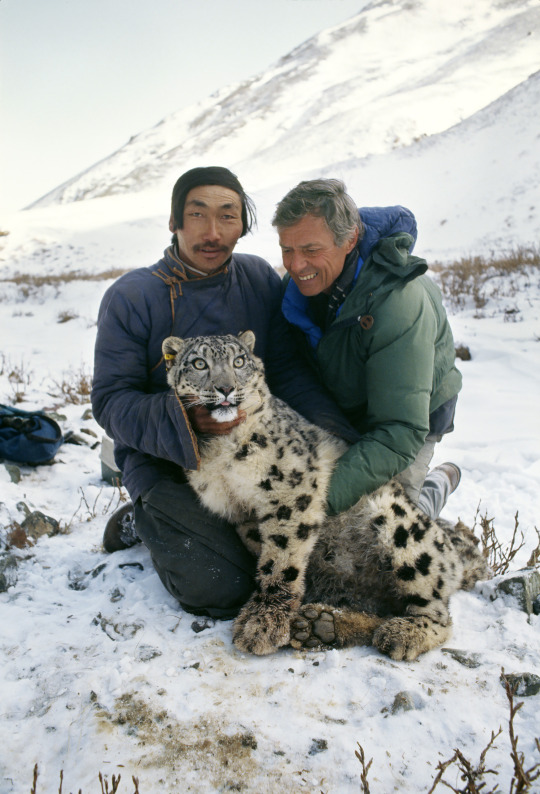

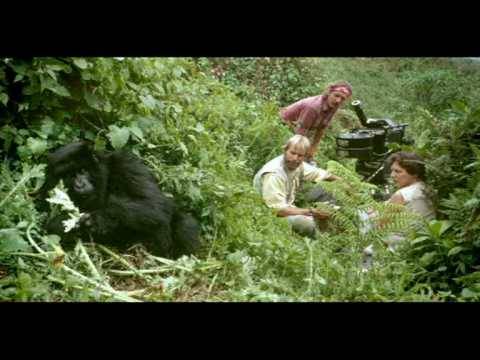
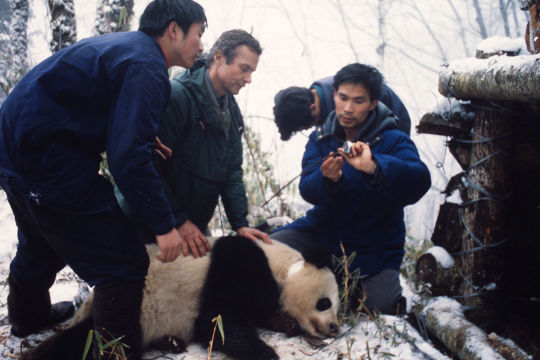

Today’s post deviates from squirrel monkeys to focus on renowned zoologist, George Schaller.
Dr. Schaller had 12 species he focused on specifically, one of which being gorillas. He was actually the first field biologist to directly study gorillas for so long and write a publication on them. His work with Mountain Gorillas helped change public perception of them from violent beasts to gentle giants and even influenced other famous primatologists like Dian Fossey and Louis Leakey. Some other species he studied extensively in the field include lions, snow leopards, and pandas. Above is a collection of images covering different times and animals studied in his career.
As a scientist fully believing in research and data collection before making conclusions, he was actually one of the few to say that the legend of Bigfoot deserved proper research. With so many sightings, he believes there is some explanation to be discovered, and with new primate species being discovered as recently as last year, it isn’t exactly a far-fetched idea that a species could have eluded scientists for this long.
Nowadays, over 80 years old, he still contributes to conservation efforts. He served as director of New York Zoological Society’s International Conservation Program, serves as Vice Principal of Panthera Corporation and chairman of their Cat Advisory Council, and is a senior conservationist at the Bronx Zoo’s Wildlife Conservation Society. Dr. Schaller’s work contributed to the protection of endangered animal’s habitats like parks and nature preserves. These lands include areas in the Amazon, the Hindu Kush, and forests in Southeast Asia. One outstanding example is over 200,000 miles of protected area in the Chang Tang Nature Reserve in China, three times larger than America’s largest intact protected area.
I’ll end this post with a quote.
“If we fail to create awareness of wildlife, then we fail to preserve for future generations.” George Schaller
9 notes
·
View notes
Text
The Evolution of Saimiri
Squirrel monkeys are thought to be related the closest to capuchins, and then to night monkeys, tamarins, and marmosets. Saimiri’s split is estimated to have happened 16.7 million years ago. Below are examples of the aforementioned primates in order, with two tamarins.
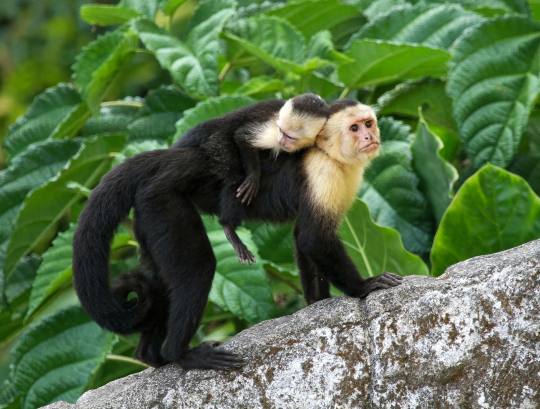
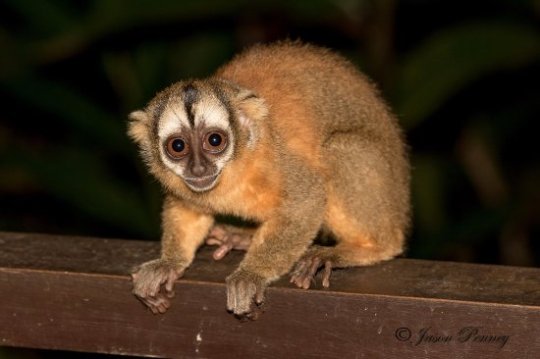

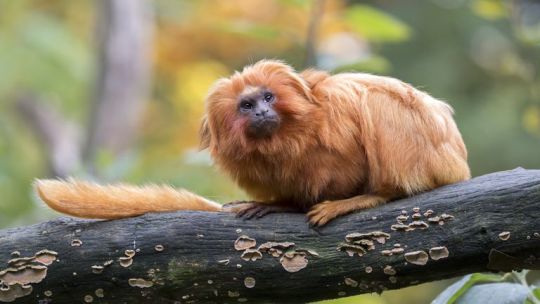
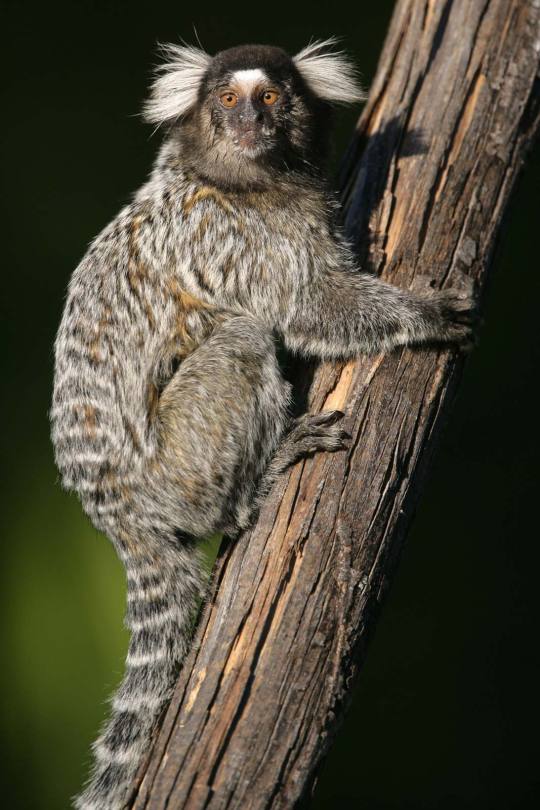
The origins of Saimiri are in the south-central Amazon. During the pleistocene, rivers were formed which became habitats for squirrel monkey ancestors when trees grew up around them. Saimiri speciation occurred due to the Amazon River serving as a powerful barrier, and the various species evolved along with the rivers as they formed east, north, and south from the Amazon.
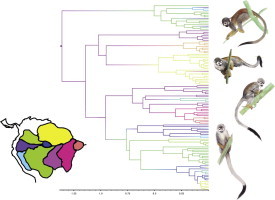
Since the initial split and some failing splits, the Black-capped squirrel monkey was the first species still alive today to diverge from the other squirrels, about 1.5 million years ago.

Saimiri fieldsi and Saimiri annectens are the extinct species of squirrel monkey, thought to have died out between 13.8 and 11.8 millions years ago.
Species relationships are often disputed due to the subtle differences in morphology, behavior, and ecology. Currently, there are five species. Three of these species have multiple subspecies. The picture below does not include every type of squirrel monkey but gives a good idea of the variances.
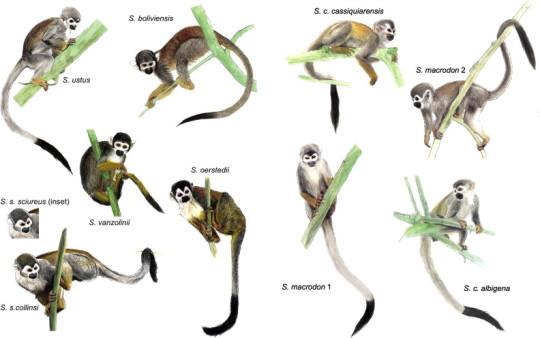
11 notes
·
View notes
Text
Introducing....SAIMIRI
Squirrel Monkeys are New World Monkeys found in the wild only in Central and South America. Tropical forest canopies are their natural habitat. They are 25-35 cm in length with a tail that is at least as long as their body. Squirrel monkeys dine on insects, fruits, and occasionally nuts or some small animals like lizards and birds.
Saimiri is the only genus in the subfamily Samirinae. This genus has five species, and those are:
The Common Squirrel Monkey (Saimiri sciureus)

The Central American Squirrel Monkey (Saimiri oerstedii) Threatened

The Bare-eared Squirrel Monkey (Saimiri ustus)

The Black-capped Squirrel Monkey (Saimiri boliviensis)
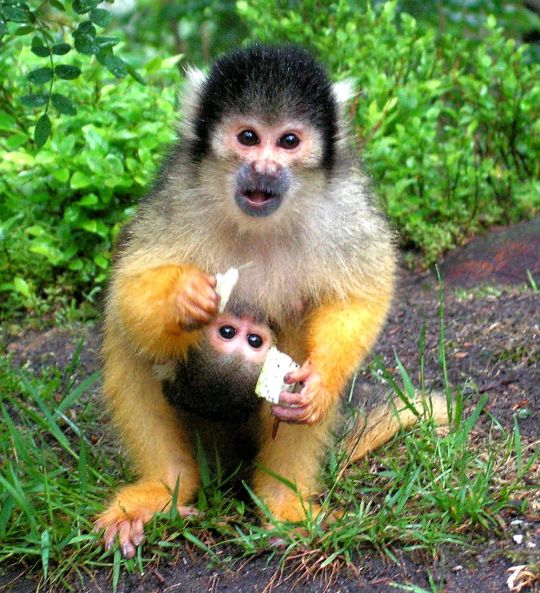
AND the Black Squirrel Monkey (Saimiri vanzolinii) Threatened
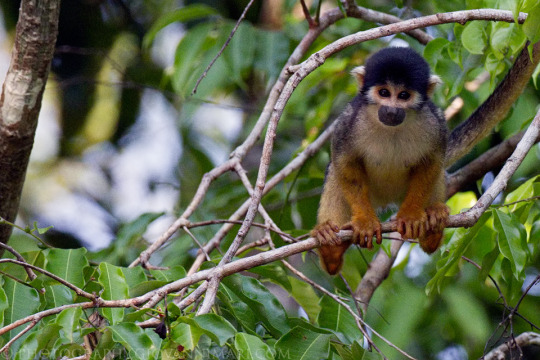
There are also various subspecies and some extinct fossil species.
Recently, it has been debated over whether to add a species to the squirrel monkey family: Saimiri collinsi as opposed to them being a subspecies of the Common Squirrel Monkey.
So ABOUT these teensy precious Monkeys!
Some traits they have adapted to live in their habitats in South America:
Non-prehensile Tail (to help with counterbalancing and leaping in their arboreal environment)
Troops or Bands (because intimidating predators is easier with a large population, and more monkeys means more lookouts)
Camouflage (To the untrained eye, they can blend into the canopy branches)
Teeth cusps (help with insect consumption) and males have larger canines to help with competition for mates
Well-developed thumb (grasping items, clinging infants, climbing) These are actually pretty dexterous and allow the monkeys to pick fruit and grab insects and small vertebrates out of crevices.
Scent-marking (urinating on their hands and feet so they mark their scent on branches they touch to establish their territory)
Vocalizations (squirrel monkeys have different alarm calls that mean different things! This helps a the monkeys identify one another and warn each other of predators or rival monkey bands approaching)
Pseudo-penises (Since females are the dominant sex in this genus, their clitorises have enlarged to be similar sizes to the males’ penises and they use them to express dominance over other members of the band)
Not an adaptation, but a fun fact to end with: Squirrel monkeys were the first monkeys to enter space! See below: Miss Baker

14 notes
·
View notes
Photo

Black capped squirrel monkey (Saimiri boliviensis) by jcone http://ift.tt/1zIPb8X
67 notes
·
View notes
Photo

Squirrel monkeys are the first primates to travel in space in the world.
139 notes
·
View notes
Photo
The opening post to my blog :)

Eating lunch
2K notes
·
View notes